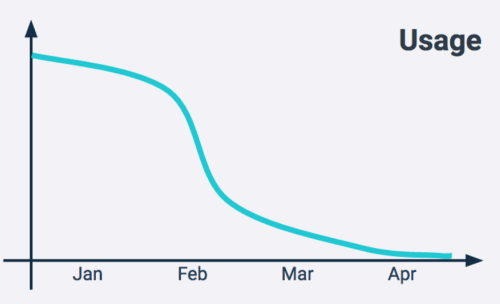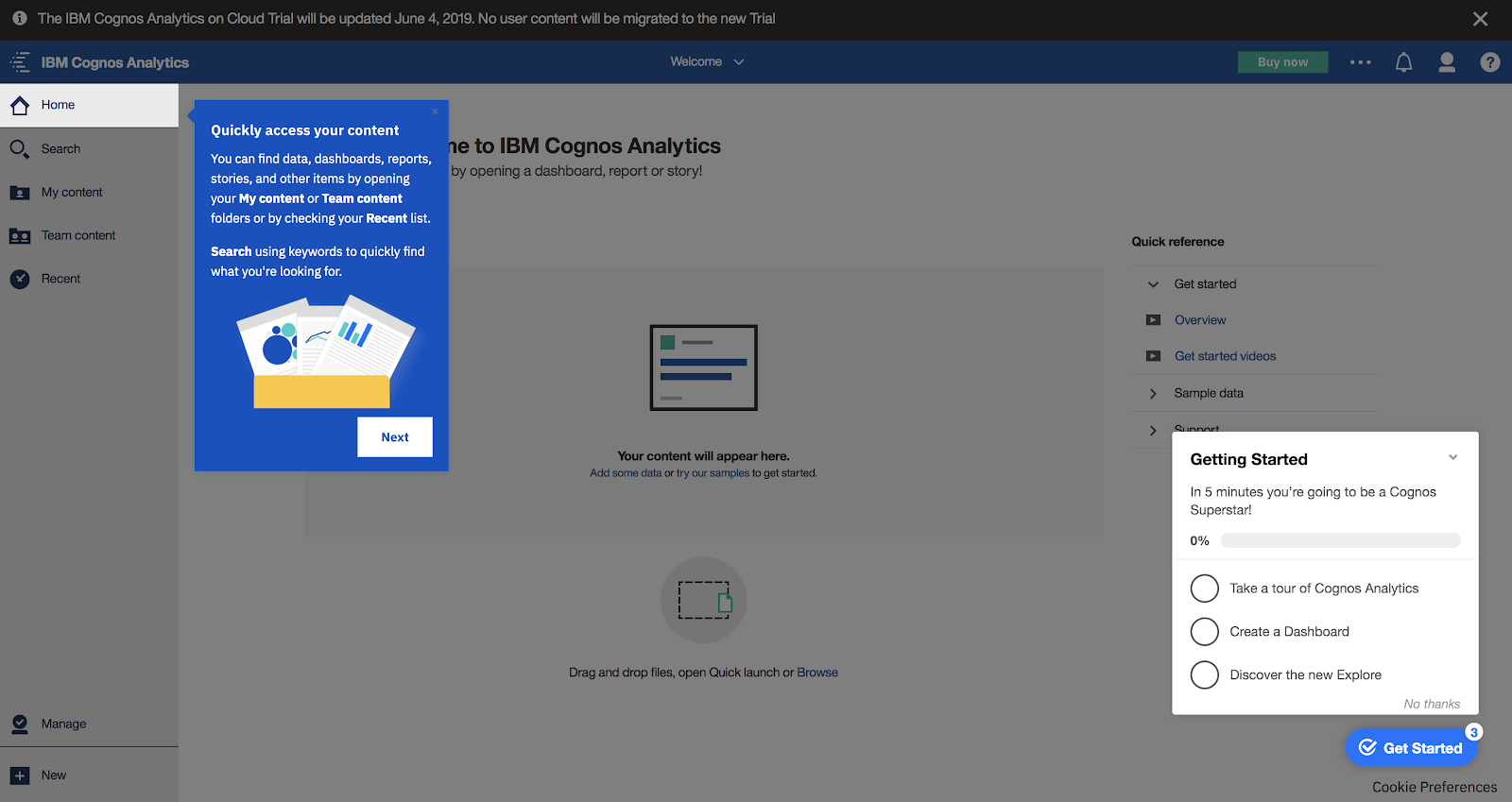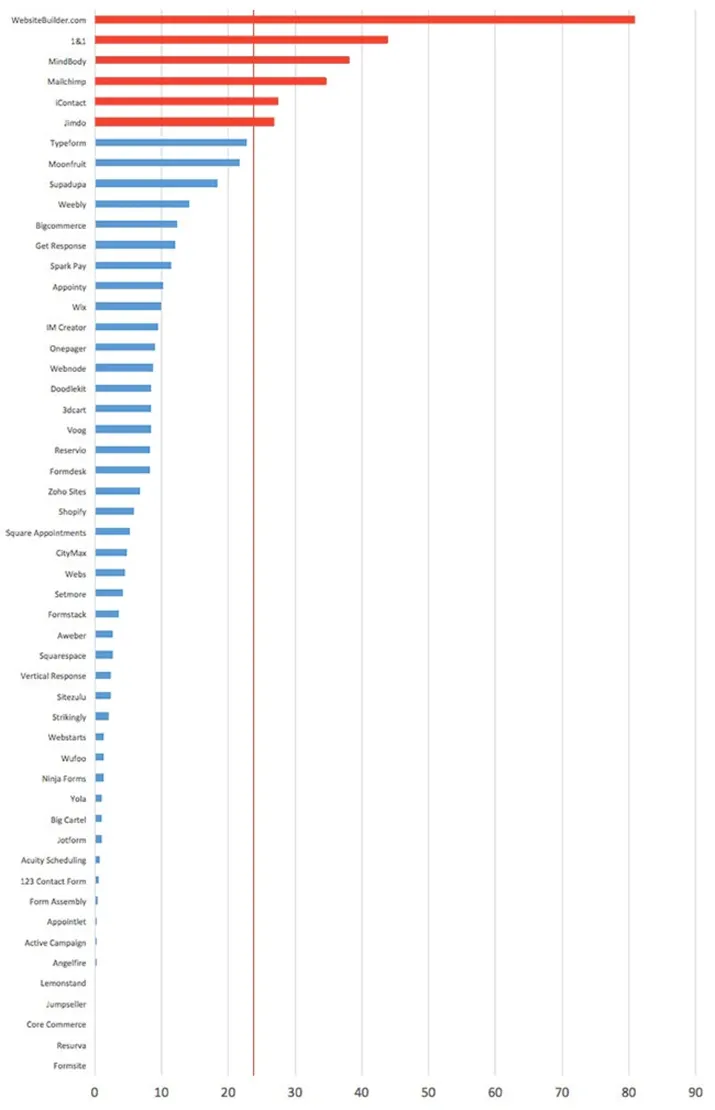How to Fight SaaS Churn
Keep the Customers You Worked So Hard to Win

Matt Francois
CEO of SaaS Tune

Churn or, more simply "losing existing customers" is one of the biggest killers of B2B SaaS companies. While some churn is unavoidable, if your churn rate is too high, it will undercut your growth efforts and rob you of months or years of per-customer profitability.
In many cases, once you factor in churn, a SaaS company could be both getting scores of new customers and hemorrhaging money at the same time. It's like filling a bucket with a hole in the bottom. Open the faucet by all means, but if you don't stop up the hole, you're in trouble.
You can increase your revenue by 100% by reducing your churn rate by just 5%. Even small improvements here can have huge effects on the rest of your business.
Why Churn is So Bad
Often, when customers have churned, it's already too late. They've formed an opinion of your business that'll be practically impossible to change. Remember, "your brand is defined by what other people say about you when you're not in the room." For churning customers, they have already decided that your brand isn't one they're interested in talking about anymore, or they have nothing good to say.
By breaking this down further, we can see that churn is dangerous in several ways:
First, you're losing a customer. Goodbye to their subscription dollars. You've wasted all the effort and expense of acquiring that customer in the first place.
Secondly, you're weakening your messaging and damaging your brand. According to Seth Godin:
Marketing is no longer about the stuff that you make, but about the stories you tell.
A glowing customer testimonial tells a great story about your company. Conversely, there's nothing more damning than a bad reputation among your target users or buyers. Dissatisfied, churning customers are the ones forming a negative story about your brand.
So how do you turn the tide and reduce churn? Here's how to accurately identify churn and determine your churn rate:
Spotting churn
Start by identifying "red flag" actions. What do customers do before they churn? Find out and target retention efforts at customers who display these behaviors.
But the best time to address churn is before it even shows up in your stats as churn. By that point, it's already happened, and interventions will be less effective. Instead, you'll want to look for leading indicators of churn rather than lagging indicators.
There are several ways to do this:
You're already collecting data on your customers, so gather all the information you can on customers who've churned and look for correlations. These might defy expectations — and they might be a coincidence, so this is a place to start, not the final source of truth. But in many cases, you'll see correlations that don't require "sanity checking" because they make good common sense.
For example, if your customers typically spend eight hours a day in your app (not unusual for a CRM, for example) and now they're down to one or two, something's up. If they usually log in ten times a day and they're down to four, again, it makes sense that you could lose them. Inactivity, or abandonment, is right up there with lapsed payments as a leading churn indicator.
This line of best fit leads right out the door:

So far, this is all pretty obvious.
But what about support tickets? You'd expect that more support tickets mean a higher probability of churn, right? The customer is dissatisfied, so they're more likely to leave.
But when ResDigital dove into their support data, they found that support ticket numbers negatively correlated with churn. It turns out that fewer support tickets indicated customers who didn't care enough about using the app to try to fix it. 70% of churning customers never contacted support at all.
If support ticket numbers can't identify dissatisfied customers, how can you flag them? ResDigital wound up using features usage numbers and their users' Key Performance Indicators (KPIs) — both an excellent place to start in your own business.
Features Usage
ResDigital found that usage of certain features correlated strongly with retention. Customers who used their email campaign functionality almost always remained with the company; customers who didn't almost always left.
You can do this yourself using superficial metrics: activity is the clearest. To make it even more transparent, track activity by feature.
Expect some surprising results and a noisy dataset. Still, you should find strong links between inactivity in core features now and churn later.
User KPIs
What Key Performance Indicators do your customers care about the most? For ResDigital, it was the number of leads that each user could generate. Customers with high lead numbers stayed; those that couldn't get leads left.
User KPIs tie activity to value: by using them, you can identify those users who are accessing your offering's value and those who aren't.
In fact, both of these metrics speak directly to value. It's vital to your entire business to understand what value your users get from your offering. It's doubly crucial when you're designing combatting churn.
Stopping Churn in its Tracks
Now that you know how to identify churn at the right stage of your customer's journey, how do you stop it?
Post-Churn: Reactivation
You can reactivate lost customers. Once you know someone has decided to leave, you should immediately seek to recover them as a customer.
Your goals during reactivation should be three-fold:
- Reinstate their subscription: Get them to come back to being a customer.
- Garner positive future remarks: Encourage them to tell a positive story about your company to others.
- Discover their reasons and motivations: Why did they sign up? Why are they leaving?
You should ask for all three. Use an uncomplicated email flow that requires the absolute minimum of effort or an exit flow as part of your unsubscribe process.
Check out how Zoom does it:

Immediately after clicking "Cancel", Zoom asks for confirmation. It reminds users of the functionality they'll be losing, as well as helping the churning user move their data off their Zoom account.
That's an important point: you want to try to hang on to subscribers, but not at the cost of their goodwill and trust. Some businesses make it easy to subscribe, and near-impossible to unsubscribe. They think they can point to their subscription numbers to feign success — but in the long term, they have an unsustainable and unethical business model.
This cancellation flow from SaaS search tool Algolia is even better:

They're soliciting quantitative data that they can sort into buckets, so they know that 32% of churning customers leave because of pricing, 25% because of missing functionality, and so on. They're also soliciting actual personal feedback that gives you insight no numbers or checklists can.
What's particularly smart about this is that it also segments churning customers into two groups: those who leave personal feedback and those who do not. Feedback-leavers are more invested in the tool, or they wouldn't have bothered to write even a few words. Plus, they've told you exactly what they want.
Algolia could potentially recover this customer by emailing them and offering a discount; while it's bad business to lessen your value and cut your revenue with excessive discounting, it's good business to hang on to a customer. Keeping an existing customer is between two and 25 times less expensive than acquiring a new one. Underselling now to upsell later makes sense.
As you can see, reactivation works, and you absolutely should be doing it.
Still, it's not the best way to address churn since it's more reactive than proactive. You'll get better results if you focus your retention efforts higher up in your funnel.
If you're getting tons of "price too high" churn, maybe your price really is too high. Or, maybe your customers can't see a clear route to the value they signed up for in the first place.
Pre-Churn: Guide Customers Directly to Value
One of the prime causes of churn is customers who never become fully active. They never discover and experience the real value of your offering because they never really engage with it.
In many cases, superior onboarding flows can move the tire-kicking free trial customer to a long-term financial commitment by walking them through the value and letting them experience it first-hand.
In other cases, it can let inactive users, or users who aren't active with your core features, discover the value they've been paying for but missing.
So optimize your onboarding for speed of value: you want people to seamlessly experience your offering's central value for themselves as quickly as possible. That means eliminating obstacles and optimizing the sign-up process to identify the "missing step" between being a prospect and being a customer.
Every SaaS company will have slightly different needs. Some enterprise-focused SaaS companies will be doing their onboarding via multiday courses onsite at their customers' business. Others have such a light offering that extensive onboarding might get in the way. For those of us in the middle, in-app onboarding that starts with the welcome-and-confirm email is the way to go most of the time.
IBM's Cognos is an AI-enabled enterprise-grade BI and analytics tool — about as big-ticket as they come. But their onboarding might look familiar:

Cognos dodges the "throw everything at the user, and some of it must stick" approach to onboarding customers to a complex tool. Instead, it guides users through a simple flow focused on getting them to the value of the app's core functionality right away. And the three-step checklist in the bottom right corner is an excellent fix for being stuck in an onboarding flow that some new users feel.
Notion, the workspace app, began life as a no-code app builder; because of that, it's incredibly versatile but not as straightforward as a tool like Trello. To combat information overload, when you log in to Notion, even if you're a longtime user, you get access to a template library that offers you Notion instances already set up for various uses: sales, engineering, school, and so on:

These templates help guide users to Notion's value without having to walk through a traditional onboarding process, letting users "learn by doing."
Post-Churn: Re-onboarding
If onboarding is central to the SaaS retention process, re-onboarding is the key to reengagement and reactivation.
When you have brought churning customers back to your app, you need to guide them to the value they missed last time: you need to onboard them again.
Walk reengaged customers directly to the value your product provides and encourage engagement any way you can during this sensitive initial period. Remember, they missed this value the last time. Make sure they find it immediately this time.
Use welcome back messaging, potentially personalized, and let them know what's happened to their files and data since they were last here. Did it get deleted? Is it stored somewhere? Be upfront, keep them informed, and offer a "pick up where you left off" option if you've retained the user's data.
It's possible that you've added new features or redesigned your UX since the user churned, so make sure you include "what's new" messaging to update them.
Finally, not every returning customer left because they weren't a power user; you might not need to tell every user everything every time. Add "skip this" options to each onboarding stage and the entire onboarding flow, so they don't feel stuck in it.
Preventing Churn Before it Happens
Retention goes beyond targeting users who are churning, churned, or about to churn. You need to give your current customers who have shown no signs of dissatisfaction support to reach their goals and good reasons to stick around. Don't wait until there's a problem and then try to solve it.
Churn starts before sign-up
By feeding data back upstream from your retention and reactivation efforts with existing customers, you can restructure your whole marketing process around increasing retention.
Start by feeding the information you have about why customers churn back up to lead acquisition, starting with your website traffic.
Track the search keywords that brought each visitor, follow those visitors through to sign-up, and then on to customer success. Use churn data to identify the keywords that attracted visitors who didn't churn and focus on those keywords. Exclude keywords that exclusively brought in churning customers.
You can also tweak your sales process to educate prospects better about your offering. This functions as a form of "pre-onboarding", enhanced by the information churning users say they're missing.
The goal of all of this is to use your non-churning users to build your Ideal Customer Profile (ICP) in such a way that you attract more users who won't churn and avoid users who will.
Stay in Contact
Keep in touch with customers, even ones that seem to have high app usage and are hitting their personal KPIs well. Send tips and tricks to build their skillset at using your tool and remind them what a great deal you are. Ideally, these should be segmented, so different user groups receive appropriate messaging.
Be Responsive
Customers expect you to be responsive to them, yet so many businesses make minimal efforts in this regard:

That's the bar. Some of the biggest companies were the slowest to respond, in line with the finding that 62% of companies ignore customer service emails altogether.
SaaS companies are usually a little better at this than the average business. However, there's still a long way to go to match customers' expectations with reality. Only 21% of SaaS companies replied within an hour. Get your response time down to 60 minutes or less — that's where customers want it.
Answer support emails by autoresponder immediately and set expectations about how long a response will take. Get customers in contact with a named person as soon as possible. Underpromise and overdeliver.
Beyond that, consider new features, updates, and bug fixes in the light of customer feedback. If your customers are clamoring for SalesForce integration or a payment button, give it to them. Keep them updated about it to make them feel engaged and involved.
Build a Community
Fostering a community around your product doesn't make sense for every brand, but where it does, lean into it. You might have power users who want to share their tips and tricks, knowledge, and expertise.
Naturally, they can do this on Quora and Reddit, and they will, whatever you do. Still, if you give them a home on your site or actively participate in user communities offsite, you build trust and keep an ear to the ground.
These communities can be a fantastic source of customer data and insights, as well as free technical and user support.
Key Takeaways
- Listen to your customers' needs and problems! Everything starts and ends here.
- Use leading, not trailing metrics to assess churn.
- The right time for retention efforts is now. Retain preemptively, fight churn before it happens, as it's happening, and afterward.
- Build onboarding and success directly into your sales process.
- Use churn data to improve ad targeting and brand messaging.
- Tie everything back into user value. What do your users truly care about?
Share on:
Facebook /
Twitter /
LinkedIn /
Reddit /
Hacker News /
Email